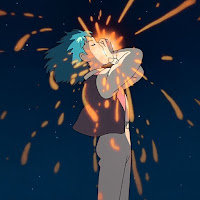Interactive Design - Project 1: Prototype Design - Digital Resume/CV
15.05.2024 - 29.05.2024 / Week 4- Week 6
Teo Mei Hui / 0358315
Interactive Design / Bachelors of Design (Honors) in Creative Media / Taylor's University
Project 1: Prototype Design - Digital Resume/CV
CONTENTS
LECTURES
Week 4
Week 5
INSTRUCTIONS
TASK
Part 1 Prototype Design – Digital Resume/CV
-
Content and Structure:
- Prepare the content for your resume, including personal details, education, work experience, skills, projects, and other relevant sections.
- Decide on the order and hierarchy of sections based on their importance and relevance.
-
Layout and Visual Design:
- Design the layout of your digital resume using the chosen prototyping software. Define the placement of different sections and how they will flow together.
- Apply a consistent visual design using typography, color palette, and appropriate spacing.
-
Sections and Organization:
- Organize your resume into logical sections, such as "Profile," "Education," "Experience," "Skills," "Projects," and "Contact."
- Prioritize sections based on their relevance and significance to the position you're targeting.
-
Visual Elements:
- Incorporate relevant images, icons, or placeholders that align with the content and enhance the visual appeal of your digital resume.
-
Prototype Presentation:
- Update your e-portfolio explaining and showcasing the processes of the task
- Clarity and effectiveness of the UI design, layout, and visual elements.
- Appropriateness of the chosen typography, color palette, and imagery.
Process
.jpg)
|
| Figure 2.1 Visual references |

|
| Figure 2.3 Sketches |
Digitization
.png)
|
| Figure 2.5 Inserting content |
Then, I chose the typeface that I liked and also adjusted the font sizes. I used Limelight for the headers and ITC Garamond Std for the body texts.

|
| Figure 2.6 Choosing typeface |
Next, I constructed the icons for the Adobe applications, as I could not find the complete set online. I also constructed the proficiency level indicator. Fortunately, some of the icons are vectors that I found online, which saved a lot of time.

|
| Figure 2.8 Masking image |
After I was done setting up the typography, images, icons and visual elements, I started arranging the layout.

|
| Figure 2.9 Arranging layout |

|
| Figure 2.10 Choosing color scheme |
Refinement
I got feedback from Mr. Shamsul, he advised me to change my header's
typeface, it's not really suitable as it does not really reflect my identity
of UI/UX Designer. So, I changed the header typeface to Inter, which is most
recommended for UI/UX design (according to the first search result shown by
Google). I was thinking if I should change the body text as well but it
looked fine so I didn't.

|
| Figure 2.12 Changing typeface |
Mr. Shamsul also suggested I change my color scheme. He sent me a few pictures of colors he would recommend, all which are more futuristic and techy colors. I took one of the pictures I liked as reference and based my color scheme on it.

|
| Figure 2.13 Suggested colors by Mr. Shamsul |

|
| Figure 2.14 Final color scheme |
Final

|
| Figure 2.15 Final Resume/CV UI Design Prototype (JPEG) |
FEEDBACK
Week 6
Mr. Shamsul said that if it were up to him, he wouldn't use the typeface for the heading. It doesn't really reflect myself as UI/UX designer. The design doesn't really show that I'm a UI/UX designer. Instead, opt for typeface with a more techy look. Try to explore other color schemes as well, something more futuristic.
REFLECTIONS
Through this task, I was able to learn how to create an effective CV by using good layout and visual design as well as appropriate typography and color schemes. I also learned how to use Figma to create design prototypes. Figma was quite simple and easy to use, which was fortunate, because I had quite a hard time figuring out the design for my CV. It looked too simple and unprofessional at first so I was unsatisfied with it, after some advise from Mr. Shamsul, I was able to improve it. It is not easy to create a CV that is concise but still visually aesthetic. This was a great learning experience, it will definitely help me create a better CV in the future.
.jpeg)



.jpeg)

Comments
Post a Comment